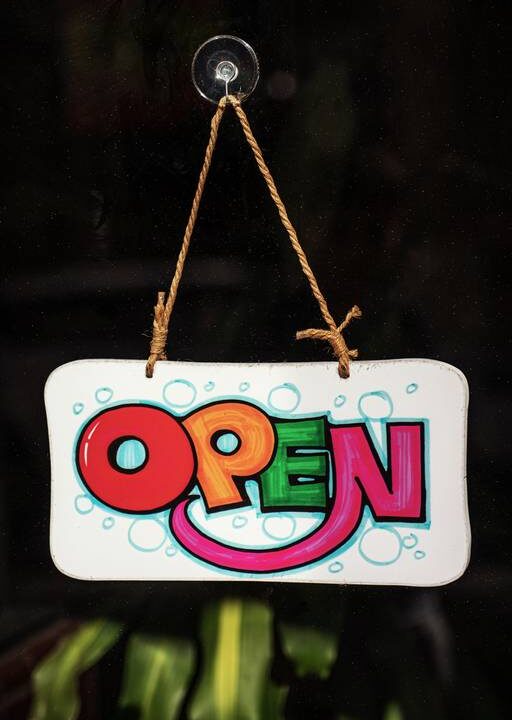The coronavirus threatens the world’s economic life. Social distancing measures, essential to fight the epidemic, are sharply reducing demand in sectors such as transportation, restaurants, hotels, and entertainment. Other industries will have difficulties producing due to supply disruptions (employees unable to come to work; outbreaks closing down firms). This direct output loss is expected to be short, probably a few months. Although the government cannot undo this direct output loss, it can alleviate economic hardship during the epidemic and prevent the direct output loss from causing lasting damage to the economy.
Absent government actions, the direct output loss will create large losses for businesses and may lead to mass layoffs. Many businesses and workers do not have enough liquidity to weather dramatic shortfalls in demand. The risk is to see many businesses liquidate, severely affecting workers’ families. The death of a business has long-term costs: the links between entrepreneurs, workers, and customers are destroyed and often need to be rebuilt from scratch; laid off workers need to find new jobs1. Keeping businesses alive through this crisis and making sure workers continue to receive their paychecks is essential—even for businesses and workers that have to remain idle due to social distancing.
Providing liquidity—in the form of interest-free loans, for example—can help businesses and laid off workers weather the storm, but this policy is insufficient. Loans do not compensate businesses and workers for their losses; loans just allow them to smooth costs over a longer time horizon. In the case of the coronavirus crisis, however, it makes sense for the government to compensate businesses and workers for their losses so that each business can re-emerge almost intact after the hibernation due to social distancing ends.
In the context of this pandemic, we need a new form of social insurance, one that directly targets and works through businesses. The most direct way to provide this insurance is to have the government act as a buyer of last resort. If the government fully replaces the demand that evaporates, each business can keep paying its workers and maintain its capital stock, as if it was operating under business as usual. To see how the notion of a buyer of last resort works, take the case of the airline industry. If demand drops by 80%, the government would compensate this missing demand, in effect buying 80% of plane tickets and maintaining sales constant. This would allow airlines to keep paying their workers and maintain their planes and equipment without risking bankruptcy.
The reason why such a policy would work in the case of the coronavirus pandemic is twofold. First, it is clear what is driving the shock: a health crisis that has nothing to do with any business’s decision and will be temporary. Second, different industries are affected differently.
That’s in contrast to normal recessions, where the drop in demand is widely spread and has no clear timeline.
How much would such a buyer-of-last report program cost? An economy-wide fall in the demand for goods and services of 40% over 3 months leads to a 10% drop in annual GDP. The government can fully compensate private losses by transferring 10 points of GDP to the private sector, financed via an increase in public debt. The direct output loss from social distancing measures would be put on the government’s tab, i.e., socialized. The distributional consequences of this policy would be controlled by the tax system. Governments can decide later how to adjust taxes to repay the extra debt; with progressive income and wealth taxes, for instance, the cost would be borne by the wealthiest.
A buyer-of-last resort policy cannot be implemented perfectly, but governments can come close. For the self-employed and workers such as Uber drivers, the government would replace lost earnings; this would be similar to unemployment insurance. For large businesses, government compensation would be conditional on businesses not laying off any workers. It is better for businesses to keep their workers even if they are temporarily idle so that business can resume quickly—without having the rehire new workers—once demand picks up. For government sectors such as education, when schools close, teachers should continue to be paid, and so on.
Current proposals to deal with the economic consequences of the pandemic do not go far enough or are not well targeted to the ailing sectors. Business loans help businesses but do not compensate them for their losses. Postponing tax payments helps with liquidity but is not well targeted, since it also benefits individuals and businesses not directly affected by the pandemic. Direct payments to individuals (such as $1,000 checks to each household) help alleviate temporary economic hardship but this policy is poorly targeted as well: it’s too little for those who lose their jobs, and is it not needed for those who don’t. During social distancing, the goal should not be to increase aggregate demand, since people can no longer spend on many goods and services. Unemployment insurance and paid sick leave policies come closest to helping laid off workers and those unable to work, but they do not help businesses.
A buyer-of-last resort program would work if it was very limited in time, so that the cost remains manageable and business decisions are not affected. It would not fully offset the economic cost of the coronavirus. No matter what governments do, there will be real output losses. Even if airlines workers are paid, the plane rides won’t happen. For some sectors such as the food sector, supply chains distortions will happen no matter what, due, e.g., to quarantine measures. But a buyer-of-last-resort program would alleviate the hardship of workers and businesses. It would maintain the cash flow for families and businesses, so that the coronavirus shock has no secondary impacts on demand—such as laid-off workers cutting down on consumption—and a quick rebound can take place once demand comes back. Business activity is on hold today, but with an intravenous cash flow, it can be kept alive until the health crisis is over.
1This point on direct losses and indirect losses through feedback effects is well explained in Gourinchas, PierreOlivier “Flattening the Pandemic and Recession Curves”, March 13, 2020.


